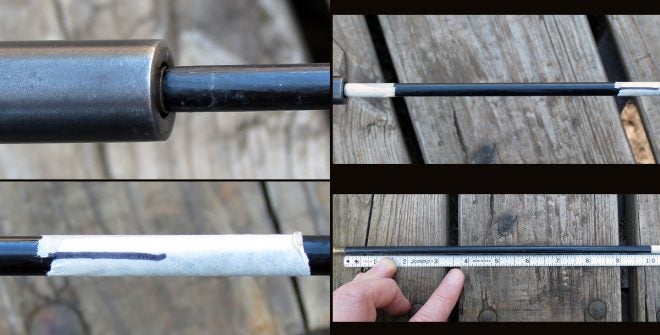Firearm Fundamentals – How to Measure Rifling Twist Rate
Russ Chastain 03.01.21

When it comes to rifles, you often hear people talking about ‘rifling twist’ or ‘twist rate.’ While most hunters and shooters don’t need to know anything about twist rate, knowing how to measure rifling twist can sometimes be helpful.
Why Care About Twist?
The accuracy of a rifle is attained by causing a bullet to spin or rotate as it travels down the barrel. This spin is imparted by rifling (a series of spiral grooves inside the barrel) and that spin is what stabilizes the bullet’s flight. For any given caliber and bullet weight, there will be a certain rate of twist which will stabilize that bullet best. So, knowing the rate of your barrel’s rifling twist can help you determine which bullets your rifle will shoot best.
Rate of twist is given as a ratio of one turn (or full rotation of the bullet) in “X” inches of travel through the barrel. For example, a 1 in 12″ twist rate means the bullet will spin 360 degrees (one full rotation) for every 12 inches of barrel through which it travels, and be aware that the lower the second number, the faster the bullet is spinning. As another example, 1 in 10″ is considerably faster than 1 in 48″ twist. Manufacturers of ammunition and bullets will often recommend an ideal twist rate for any given bullet and/or load.
How to Measure Rifling Twist
The rifling is hidden inside your rifle barrel, so how can you measure it? Well, it’s actually pretty easy. All you need is a quality cleaning rod with a rotating handle, a bore brush, or patch and jag which fits snugly in your rifle’s bore.
- Start by making sure your rifle is unloaded with the action open.
- Insert the brush or jag into the bore making sure it fits snugly and engages with the rifling.
- Either stop your rod at a known point (I stopped mine where the brass fitting meets the black rod) or put a mark or a piece of tape on the rod flush with the muzzle of the rifle barrel.
- Make a reference mark on top of the rod that will allow you tell when the rod has rotated one full turn, and make the mark farther from the muzzle than your expected twist rate (if you expect a 1 in 9″ or 1 in 12″ twist rate, make your reference mark about 14 inches from the muzzle). I put a piece of tape on the rod and marked it with a Sharpie.
- Now, push the rod into the rifle’s bore, making certain that the rod is rotating freely so the brush or jag can follow the rifling.
- Watch your reference mark, and stop when that mark has come full circle, having rotated one full turn.
- Mark the rod at the muzzle. I used masking tape to mark my rod.
- I recommend repeating the process to make sure you got an accurate result. If the results are the same, it’s time to measure the rod to determine your rifling twist rate.
- Measure between your two reference points. In my case, that means the end of the brass fitting and the edge of the tape I wrapped around the rod after one full turn. My rifle’s rate of twist is 1 in 10″ (one turn in ten inches).
Measuring Slower Twist Rates
What if you want to measure rifling twist in a barrel with a really slow twist, such as a muzzleloader with 1 in 60″ or 1 in 48″ twist? After all, you hardly ever find rifles with 4- and 5-foot barrels. In that case, just measure how much bore travel is required to rotate your cleaning rod a half-turn, then double your measurement for the twist rate (a half-rotation in 24 inches would mean a 1 in 48″ rate of twist).
On really slow twists in shorter barrels, you may need to change formulas and measure how many inches it takes to turn the rod 1/3 or even 1/4 turn, making sure to triple or quadruple your measurement for the twist rate (1/3 rotation in 20 inches = 1 in 60″ twist rate). Now you know how to measure rifling twist so you can figure out which bullets will shoot best from your rifle. Pretty cool, huh?